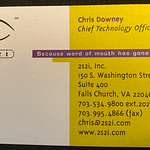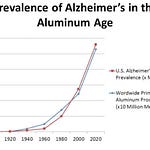Mark is a brilliant person whose health problems have whipped him into spending a decade investigating this subject. This is one of my best interviews, and the Rumble link is HERE.
Mark has much in common with the prescription drug-damaged people on Tim Alexander's "Legal Death" Facebook site. Tim was propelled into action by his family connection to the San Bernadino killer, who turned violent because of psychiatric drugs. Tim's fascinating story is HERE.
Mark has had his life ruined by metal exposure. These before and after photographs tell his story:
Mark said, "That droopy face photo was taken around four months after the surgery. The implant had titanium screws and carbon fibre rods. I ended up being allergic to it all."
To improve his health, Mr. Kennard studied metal toxicity by networking with international experts. Although he is far more affected than other people, he has lessons for us all.
Dr. Schroeder, a podiatrist, became an authority when he saw patients with issues like Mark’s. He faces the orthopedists and tells them that the ways they use implanted metals is careless.
Since few doctors in medicine or dentistry are interested in these issues, you cannot find this material in one place elsewhere.
Horse doctors look in their patients' mouths first, and if you have any health problems, this is your best first step to solving them. Oral bacteria have been found in the majority of coronary artery blockages and have also been studied inside Alzheimer's disease brain structures. Mercury dental amalgams are another huge problem. These are still placed into 100 million Americans each year.
If you read my three dental posts (the references are below), you recall that I described four issues:
Infections of root canals, implanted teeth and other dental work. These are almost universal and frequently asymptomatic. The treatment is most often removal without replacement.
Battery or current effects between different metals in the body, such as orthopedic titanium alloys and mercury and aluminum in dental work. This causes toxic metal shedding into the body.
Allergies or special sensitivities to metals, which can be much worse. Mark has this.
Mercury extrusion from dental amalgams happens even in the absence of the above. It is the most toxic non-radioactive metal; half US dentists use it anyway. Allowing these ignorant, careless fools to continue this is an atrocity.
Mr. Kennard says that any surgeon or dentist placing metals inside the human body must be aware of all these problems and test their patients before they operate. None of them do this now, and many do not even inquire about metal allergies. When asked, many people (17 percent for nickel alone) say, for example, “Yes, I get a rash on my wrist where my watch touches,” or “Cheap jewelry and I do not get along.”
Even titanium, generally regarded as biologically inert, has a reported allergy rate between .6 and 2.3 percent. Orthopedic and dental implants manufactured with this are alloyed with other metals, including aluminum, the second most toxic metal after mercury.
Implants for sensitive people are commercially available. These include nitride coating or ceramics.
Mark also tells us how to detox safely and what the pitfalls are. Vitamin C is a wonder for health if you have no metals in your body, but it can speed up metal disintegration and toxicity if you are highly sensitive. Another medical marvel, chelation, must be used cautiously and only by experienced practitioners. EDTA chelation should not be used for mercury.
I have 17 amalgams that are scheduled for removal in August. My dentist drew blood to see if I would have problems with various composite filings. The report says I am reacting to mercury, aluminum, and several other metals. Although there are thousands of dental materials, Mark Kennard and Teresa Franklin (the co-author of Mercury Free) said Saremco composite fillings are the least reactive type because these are supposedly metal-free.
Mark wrote me about my situation:
I've looked at that report, and based on it, your dentist will choose the best replacement for your amalgam fillings.
After you get your amalgams removed and remove all other sources of aluminium that you can as well, your biggest issue will be the aluminium in your orthopaedic implants. Because I don't know the ingredients in your mesh [from my hernia procedures when I was 23], I can't comment on that but if it has aluminium in it then it will also be a concern.
That report shows you have breached your mercury and aluminium antigen tolerance levels. The report tells you how your blood is reacting right now, and right now your blood is telling you that it is not coping with mercury or aluminium and that they will be causing you symptoms of some kind.
That's the best way to interpret it. But it should be interpreted in conjunction with reading the following statements. Because the most important thing that needs to be understood is the meaning of hypersensitivity and your biggest risk to your health and life after getting the mercury removed is the aluminium in your orthopaedic implants.
You could decide to replace them with something more biocompatible but the only thing that would help is something which doesn't release aluminium ions. Something without any aluminium at all and that's a challenge.
Hypersensitivity isn't a label for the type of person that has bad reactions to metals because of gene mutations.
EVERYONE implanted with metals will eventually get really symptomatic and die but in people with certain gene mutations it just happens sooner.
We all become hypersensitive to metals from exposure. Every single one of us, because metals are the most difficult toxin for the body to deal with as they are not liquids but solids. That's the best way to look at it.
Everyone exposed permanently to aluminium will get dementia or Alzheimer's type symptoms.
Hypersensitivity is a label that means our body isn't coping with metals RIGHT NOW. So both mercury and aluminium are causing you problems right now.
And this is the most important thing you need to consider when deciding on chelation or detoxification. Your body isn't coping with aluminium right now. Any process that speeds up the corrosion of your titanium alloy implants will release aluminium into your body too.
Slowing down the release of aluminium ions will buy you more time being healthy and alive on this planet.
Removing the implants and replacing them with something which has zero aluminium will be difficult [custom implants can be made].
If you had implants that had zero aluminium, I'd say go ahead and use products that speed up your detox processes
But because there is aluminium in the titanium [shoulder] implants, my advice is not to unless you plan on replacing all your implants with new ones which contain no aluminium at all.
Because if the implants are being left in, then it's all about buying time.
Hopefully the worst symptoms you have are caused by the mercury only. They can have similar symptoms.
If they are, then all your health symptoms will vanish. But they won't be.
Symptoms that the aluminium are causing will not disappear unless you remove everything from your body which has aluminium in it.
Once you have removed the mercury fillings, we need to reassess things.
I have a colleague who is an orthopedic implant surgeon. He and his partners have done thousands of knee and hip implants and have seen only a few problems like Mark's. In the early phases of my friend’s career, the implants of the day had less biocompatible metals, so the long-term results were less consistent. He says that today's titanium alloys containing aluminum, titanium, and vanadium have superior strength, biological compatibility, and wear characteristics. He reminded me that hip implants are regarded as the best surgery of the 20th Century. He writes:
Chromium cobalt (CrCo) implants have been used since the 1940s and were (and still are in some places) bonded to the bone using methyl methacrylate acrylic cement. CrCo alloys contain a small amount of nickel and are a source of what is thought to be true implant hypersensitivity reactions, yet they rarely require revisions. I've seen maybe two severe allergy cases in my career. Failed implants requiring surgery have many factors in play, so surgeons have difficulty being sure about the causes.
Structurally, implants are durable and resist breakage and surface wear. Loosening at the bone interface after 10-20 years is the most common cause of failure.
Biologically bonding (bone ingrowth technology) is now used for most modern implants to eliminate cement and reduce loosening over time as the "grout" fatigues and breaks down. It does not work well for the glenoid [the cup part of the shoulder joint], and the cement works better. Biological bonding involves texturing surfaces so the implant attaches to bone. Once ingrown, these self-repair by remodeling over time. CrCo is strong and inflexible (resisting breakage) but is affected by the implant material and bone elasticity mismatch. This may lead to atrophy and resorption of adjacent bone, which can produce bone loss, fatigue fractures, and loosening over time.
Commercially pure titanium and aluminum, and V alloys of titanium or Niobium, have similar qualities as bone, so remodeling is more favorable and physiologically compatible. Like aircraft wings, they are fatigue-resistant under repetitive mechanical stress. Unfortunately, pure titanium alone is not as strong, and even its alloys, though stronger, have poor wear characteristics of their bearing surfaces. These must be altered to improve wear. This is done with nitriding, ceramic coating, and other methods. These add to the cost, potentially alter biocompatibility, and likely have other long-term issues.
Metal-on-metal (MOM) hip implants were used between about 2004 to 2012. These were associated with metal ion shedding and debris. For some people, this is directly toxic. This has as much to do with the design of the implants as with the materials used. Interestingly, about 70% of MOM hips are still doing fine and seem to last indefinitely, whereas most conventional metal or ceramic on polyethylene bearings will eventually fail in active patients within 20 years. The most modern polyethylene (treated by cross-linking the polymer chains) is inert and durable, but we only have about 20 years of data for it. This is the most common material used in hip, knee, shoulder and other implants now.
Particulates related to wear, loosening, or implant breakage are generated in implants by polyethylene, cement, or even implant texture fragmentation. This shedding causes tissue reactions for every patient to some degree. It may be direct toxicity from metal ions (chromium, cobalt, and aluminum), foreign body reaction (anything of a certain particle size and amount, including cement and ceramic debris), or allergic (typically nickel).
Distinguishing between occult loosening and infection can be difficult in mild cases.
Infection and bearing surface failure are the most common causes requiring hip and knee revisions. After ten years, two to four percent of patients in primary cases need revision, and twice that many occur in revision cases.
As a practicing surgeon, the usual problem is deciding when to re-operate on previously implanted people who developed pain. If this happens quickly—for example, three to four years after hip replacement—we often have a diagnostic dilemma. We have no definitive tests to guide us. Even if we know an allergy is involved, whether to operate may be unclear. Hip revisions are big surgeries with significant risks, and many people do well in the long-term tolerating low-grade pain with the help of ibuprofen or Tylenol.
We do bloodwork, serum ions, joint aspiration, and imaging, but these are often inconclusive. X-rays might eventually show changes, but this could take six to eighteen mos. The surgeon could be liable for a missed diagnosis but hates to subject the patient to a procedure that may not improve his status.
Vast numbers of implants are placed, so allergic and sensitivity problems are significant and certainly under-appreciated. I doubt if one orthopedist in a thousand understands the problems with electrical currents between metals inside the body. I understand their viewpoint—they manage a spectrum of clinical problems and have trouble sorting out the importance of each one.
Allergy testing before surgery would improve informed consent and is a cheap price to pay for better outcomes.
I have been asked whether I would have had my titanium alloy and chrome shoulder implants done if I knew then what I know now. I am not sure. My pain was tolerable before the procedure, and I have no pain now and am more functional. But I have some doubts about the metals’ impact on my long-term health. If a patient were in this situation and asked me, I would probably tell them, “Minor surgery is surgery someone else is having.”
Background: My dental posts
https://robertyoho.substack.com/p/1ff80bd0-9448-490a-a2d6-374887dab536
https://robertyoho.substack.com/p/fa8b2d09-9752-40da-bfd8-ba90256a8d65
https://robertyoho.substack.com/p/1e28a470-5a23-42a8-8873-ce18163b50da
Mercury website: https://www.mercurymadness.org/
HERE is an academic paper by Prof Vera Stejskal about the MELISA metals allergy test. Widespread testing would reveal the people who will have the most problems.
For metals geeks: “A comprehensive summary of disease variants implicated in metal allergy.”
Mark follows the following allergy-related Facebook groups. You can too.
A gift for you: Cassandra's Memo ebook is free HERE, Hormone Secrets is HERE, and Butchered by "Healthcare" is HERE. Hard copies of Cassandra are on Barnes and Noble, and the other two are on Amazon. Please write reviews if you like them.
I have no copyright; you may quote any of my essays or books in part or whole without restriction or permission if you credit me. Also, because I am retired, I never give personal medical advice. Use the information here at your own risk.
I write full-time to help my readers avoid being butchered by "healthcare," to help them understand the world we face and to encourage them to join the resistance.
If anyone wants to volunteer to read drafts of my posts and critique them before they are published, please reply to this email.
Parting Shot
The garbage you never want inside your body is italicized.
Crest toothpaste's ingredients: Active Ingredients: Sodium Fluoride (0.15% w/v Fluoride Ion) (0.243 %), [this is a lot of neurotoxin]. Inactive Ingredients: Sorbitol [in diabetic patients or those with extremely high glucose levels, sorbitol may accumulate to toxic levels and leads to complications within these organs. Nausea, gas, diarrhea, stomach cramps or anal irritation], Water, Hydrated Silica [allergic reactions, for example, rash and swelling of the face, upset stomach, hypoglycemia in people with diabetes], Sodium Lauryl Sulfate [may slowly build up in your body over long-term use, but the amounts are small. The highest risk of using products with SLS and SLES is irritation to your eyes, skin, mouth, and lungs], Trisodium Phosphate [kidney damage, soft tissue calcification, and bone calcium removal. Continuous ingestion over a long period is linked to bone density diseases such as osteoporosis], Flavor [unidentified], Cellulose Gum, Sodium Phosphate[irregular heartbeat, vomiting, fainting, seizures, rash, hives, itching, swelling of the eyes, face, lips, tongue, mouth or throat], Carbomer [Blurred vision, eyelid margin crusting, corneal irritation, increased lacrimation; periorbital and conjunctival edema; ocular discomfort, pain, pruritus, and hyperaemia; contact dermatitis], Sodium Saccharin [rat carcinogen, banned 1981- 2000], Titanium Dioxide [!], Blue 1.
Crest is recommended by dentists:
One of the only toothpastes accepted by the ADA in six categories, Crest Pro-Health, does it all. In addition to whitening teeth, it reduces sensitivity, prevents cavities, fights plaque, prevents gingivitis, and combats bad breath. For all-around oral hygiene, this toothpaste is a winner.






















Share this post